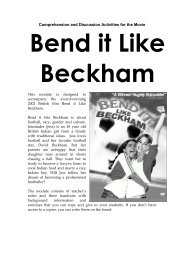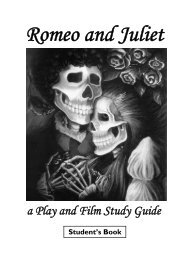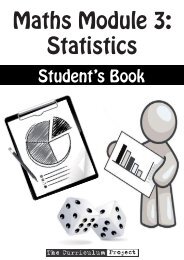Money & Barter (cont’d)Pre-teach:rural (adj): countryside (opposite of ‘urban’); debt (noun): money that is owed; selfsufficient(adj): not dependent on anyone else; interest (noun): fee paid (usually everymonth) when you borrow money.Ask students to read the text about ‘Bia Kud Chum’. Give them about 10-15 minutes.Elicit any words that students don’t know. Ask if they can guess the meaning. Ifnot, give them a dictionary, or tell them the meaning.On Your Own1. Write the following questions (but not the answers!) on the board. Ask them toanswer them in their notebooks. When they have finished put students into pairsand ask them to compare answers for a few minutes. Do they agree? Finally, elicitanswers from individual students and check agreement with the rest of the class.1. Why did the villagers in Kud Chum district decide to create the Bia?Answer: <strong>The</strong>y decided to create the Bia because many villagers were in debt and werebecoming dependent on banks and price changes over which they had no control.2. What are the advantages of a community currency like the Bia?Answer:<strong>The</strong> advantage of the Bia is that it reduces the local people’s reliance on thenational currency. It creates an alternative measure, and store, of value.3. Why was the Thai government against the Bia?Answer: <strong>The</strong> Thai government said that the Bia was illegal and dangerous to Thaisecurity. <strong>The</strong>y were concerned that many other community currencies would be launchedall over the country, causing the value of the Thai baht to fall quickly.4. Should the community be allowed to use Bia? Why/Why not?Each student decides on their answer.Pairwork2. Put the students into pairs and ask them to interview five adult members of theircommunity about when they buy and sell things using money, and when they usebarter. Particularly important questions to include are: When and why do people usebarter, or cash. Do they use different systems for different good and services? If so, why?Ask each pair to write a short report about their findings, and then ask them toread/present their report to the class, and answer any questions the class mayhave. Have the class vote on which report was the best (content andpresentation), and give a small prize to the winning pair if possible (they cannotvote for themselves).Debt, Loans & Interest: Ask the students what they know about these words. Dothey know what they mean? Ask students to read the paragraph about debt,loans and interest.Ask the students to do the following monthly interest calculation: Mi Cho borrows250,000 kyat from the bank. <strong>The</strong> bank charges her 12% interest. How much interest will she have topay each month? (Answer: 12/100 x 250,000 ÷ 12 (months) = 2500 kyat)Paw Lu: Ask a student to read aloud the text about Paw Lu. What do they knowabout debt problems in their community? Is debt a problem? Why/Why not?Foreign Debt: See the next page.<strong>The</strong> <strong>Curriculum</strong> <strong>Project</strong> ECONOMICS: an introduction - Teacher’s <strong>Guide</strong>12
Money & Barter (cont’d)‘Foreign Debt’ and ‘<strong>The</strong> effect of debt on poor countries’: Ask students to read thetext. Give them about 10-15 minutes. Elicit any words that students don’t know.Ask if they can guess the meaning. If not, give them a dictionary, or tell them themeaning.Ask them to look at the two cartoons. What do they think they mean?PairworkGroupwork1. Put students into pairs. Ask them to think of three questions about ‘Foreign Debt’and ‘<strong>The</strong> effect of debt on poor countries’. Ask them to write their questions onone piece of paper, and the answers on another piece of paper. Give them 10-15 minutes to do this. <strong>The</strong>n ask each pair to swap their question paper with anothergroup (but keep the answer paper). Give each pair about 10 minutes to answerthe questions of the other pair. <strong>The</strong>n ask each pair to give their answer sheetback and correct each other’s answers.2. Put students into three groups. Give each group one of the statements below,and ask them to discuss among themselves and think of reasons why the statementis fair or unfair. Ask them to write down their reasons. <strong>The</strong>n ask each group in turnto present their ideas. Elicit the opinion of the class about their ideas. Suggestedanswers are given in italics below each statement.PairworkSome debts were passed on to poor countries when they achieved independence fromcolonial rule.During colonial rule, the people had no control over the loans accepted by the government which ruled them,took their natural resources, and imposed foreign economic systems. <strong>The</strong>refore, many people argue that it isunfair that they should have to pay for these debts,which often funded projects which stripped their countryof natural resources.In some cases, loans were given to dictators or corrupt leaders, and the money was notspent for the benefit of the people (and was often used to oppress them).If loans are not spent to benefit the people of a country, should the people of that country be expected to repaythe loan? Many people argue that loans to developing countries were often given irresponsibly, particularlyto countries with dictators or corrupt leaders. <strong>The</strong>y argue that the people should not have to repay thismoney, particularly when it was used by leaders to oppress them. <strong>The</strong>y had no control over its use.Poor countries cannot repay their debts. In 100 years their debt will have increased toaround $13,780,000,000,000. This is $3.5 million for every person in the developing world.Interest and debt repayments take money away from badly needed hospitals, schools, and infrastructureprojects. If these debts can never be repaid, why continue to demand huge debt repayments which prevent thecountry from developing and cause a lot of suffering?‘What can be done’ and ‘Burma’s foreign debt’: Ask students to read the text. Checkunderstanding. Elicit any words that they don’t know.3. True or false. Write these statements on the board (but not the answers!). Studentsmust decide if they are true or false. If false, they must provide a correct statement.Finally elicit answers from different pairs and check agreement with the class.1. In June 2005 the G8 countries agreed to cancel 7% of the debt of 18 poor countries.Answer: True.2. G8 countries have also agreed to reduce aid to Africa by 2010.Answer: False. G8 countries have agreed to double aid to Africa by 20103. <strong>The</strong> World Bank still lends money to Burma.Answer: False. <strong>The</strong> World Bank stopped lending money to Burma in 1987.4. China, Japan and India have continued to offer loans and debt relief to Burma.Answer: True.<strong>The</strong> <strong>Curriculum</strong> <strong>Project</strong> ECONOMICS: an introduction - Teacher’s <strong>Guide</strong>13


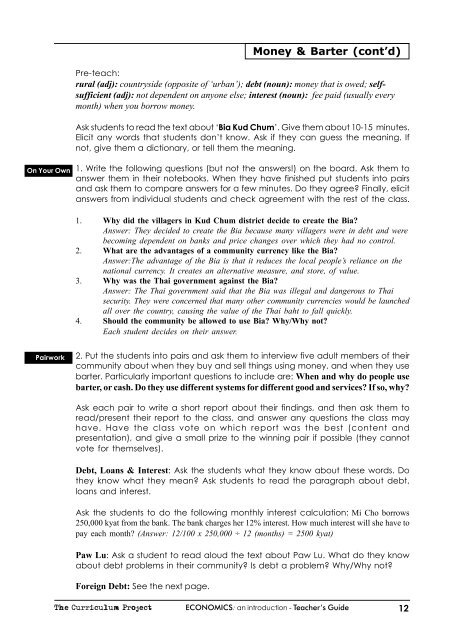
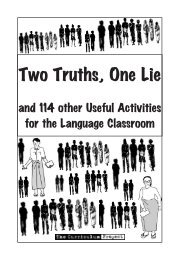
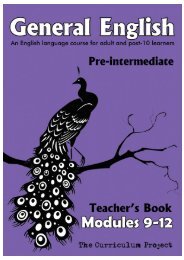
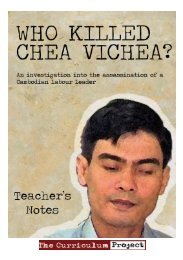

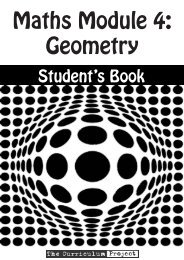

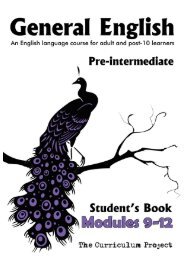

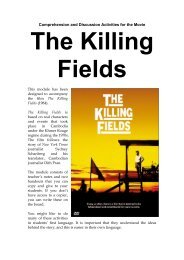
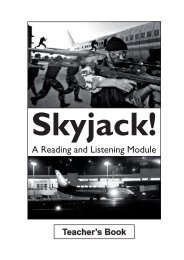
![[Eng] Nov 2012 DRAFT - The Curriculum Project](https://img.yumpu.com/45590859/1/184x260/eng-nov-2012-draft-the-curriculum-project.jpg?quality=85)
